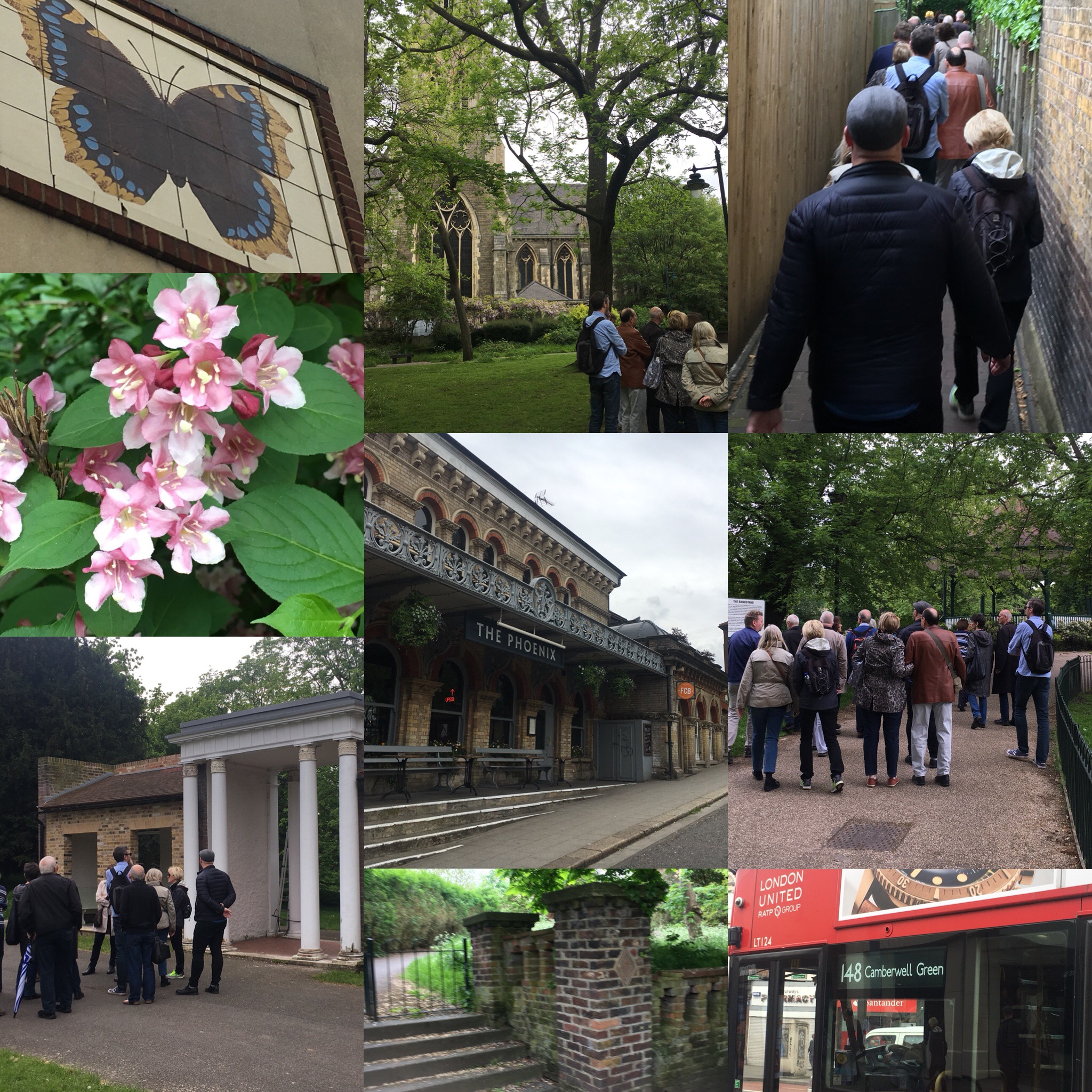Post
REPORT | Camberwell Beauty
22 May 2018
The latest of the Society's Saturday walks saw Blue Badge Guide Angela Morgan take 25 members to see the delights of Camberwell. Hannah Murphy reports (and took these photographs).
The tour began in Camberwell Green, a spacious common in the heart of Camberwell. Angela, our Blue Badge tour guide, explained that ‘Camber’ means crooked and that Camberwell literally meant ‘Crooked Well’. Historically Camberwell Green and St Giles Church, a Victorian gothic church on the hill, formed the heart of a village surrounded by farms and market gardens.
We ventured up Denmark Hill, noting the ceramic Camberwell Beauty above a shopfront. The Camberwell Beauty, also known as Morning Glory, is a maroon butterfly with blue spots and a yellow petticoat and was given its name after it was first sighted in Britain in 1748 near Camberwell.
While watching a helicopter land at Kings College Hospital, we paused at Maudsley Hospital to hear about Dr Henry Maudsley, an eminent psychiatrist, who in 1908 offered London City Council £30,000 towards the establishment of a hospital for mental illness. However, before the building was complete, the hospital was requisitioned for treating soldiers with shell shock during WWI. The hospital was eventually opened to the public in 1923 and is now the largest mental health training institution in the UK.
We then admired the architecture of William Booth College, a building designed by Giles Gilbert Scott to pay tribute to the work of William and Catherine Booth, founders of the Salvation Army. The building was opened by Prince George in July 1929.
We next wandered through Ruskin Park enjoying the sunshine, flowers and bandstand. The park had been named after John Ruskin, the famous artist, writer and social campaigner, who had lived in the area until 1871.
In the late 18th century, Camberwell’s fresh air, clean water supply and relative proximity to London attracted many wealthy families and saw the establishment of a number of mansions. Composer, Felix Mendelssohn, inspired by the tranquillity of Camberwell Green, wrote ‘Spring Song’ (originally named ‘Camberwell Green’).
By the late 19th century, Denmark Hill was surrounded by large mansions and terraced housing around Loughborough Junction, there was growing awareness of the significant lack of open space in the area. A campaign was set up to purchase a site made up of 6 large villas and turn it into a park (later known as Ruskin Park).
We next visited Denmark Hill Station, built in 1860’s. In 1920’s, a waiting room had been used as an alter for a lady known as ‘The Messenger’ who painted the waiting room white and could regularly be found singing hymns and praying. Sadly, ‘The Messenger’ passed away in 1929 and the church ceased to exist. Many people in the area attended her funeral. Following a fire in 1980 had been refurbished to include a public house called Phoenix and Firkin to commemorate the fire. The pub is now known as ‘Phoenix’.
The tour finished at South London Gallery, with the option to explore the modern artwork, the bookstore and to relax with a beverage in the lovely beer garden. We’d like to take this opportunity to thank Angela for showing us the beauty of Camberwell.
